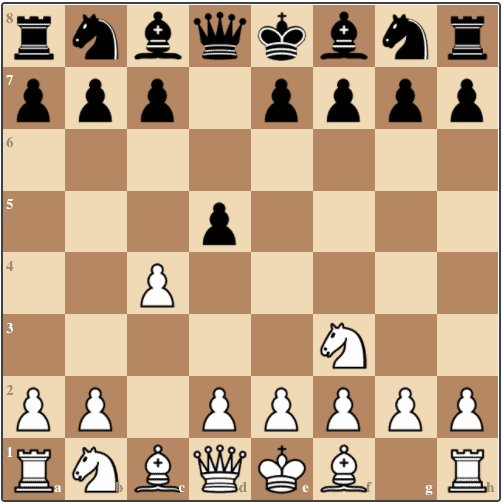Simplified Thought Process (that works)
----------------------------------------------------------------------
What did the Opponent's Last Move Change about the Position?
⦁ Examples include: new threats from the piece moved; new threats from other pieces uncovered by the move; squares weakened; new opportunities for checks, captures and threats on my part.
Checks, Captures, Threats (CCT)
⦁ Examined in the most forcing order of move types; look at all of the possible checks and captures - both yours and your opponent's - to avoid eliminating possible good candidate moves and to identify potential tactical threats.
⦁ Calculate until quiescence (no more forcing moves).
Update Plan / "To-Do list"
⦁ Do my current objectives still make sense in light of my opponent's move and CCT?
⦁ Are there new possibilities in the position for tactical or positional exploitation?
⦁ In the absence of a clearly superior/winning plan, how do I best improve the placement of my pieces?
Finalize Candidate Moves and Falsify Them
⦁ Look seriously at each move, to avoid dismissing a better move too early.
(Scanning Technique)
⦁ Look for overlapping ideas that can be applied from different variations (tactical themes and key in-between moves such as checks and threats).
⦁ Put effort into "switching sides" mentally and attempting to destroy your position after visualizing the selected move.
The usual caveats to thinking processes apply. The sequence is generally followed rather than rigidly applied on each move and some elements will be emphasized more, depending on the nature of the position (e.g. highly tactical vs. closed). It doesn't include everything I will think about during the game, especially strategic and positional considerations, but does represent what needs to be accomplished on each move in order to have it be sound.
----------------------------------------------------------------------------------
Scanning Technique
Lasker has famously expressed this process, "When you see a good move, look for a better one". This teaches us that there are good-looking moves and there are good moves. Our analysis alone should establish the difference between the two - not our likings or prejudices. We may like to move our pieces around the board in a certain way, and we should analyze these moves first, but this should not be a factor in deciding the final move that is played. It is essential to be as objective as possible without curbing our natural instincts. Not an easy task, but entirely possible!
It also teaches us the importance of the "searching" quality that is required to be a good player. We are constantly searching for the best move, even after we spot moves that appear "logical" or "forced".
Once we have established that our move is not forced, we first need to survey the options available to us. For this, I strongly suggest employing the "scanning technique" to make a list of possible good-looking moves, what we call "candidate moves".
To employ the scanning technique, first scan the board from the a-file to the h-file, starting with the pieces and then the pawns. Try to find all possible good-looking moves for each piece and make a mental list. Then do the same for all the pawns. Now we have a complete list of all the candidate moves in the position. We can then proceed to follow any of the approaches below:
- Remove bad-looking moves from the list by process of elimination;
- Analyze the most forcing continuations (checks, captures, threats and pawn breaks) to see if they work; or
- Analyze the move you like most and if it looks like it won't work, follow the process of elimination to discard bad ideas or search for the most forcing continuation.


No comments:
Post a Comment